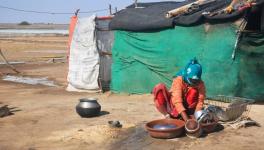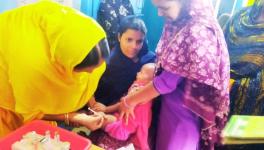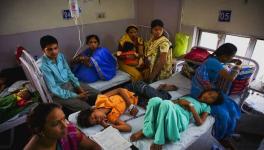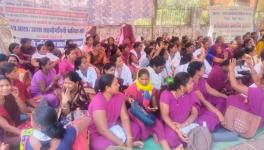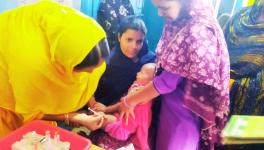As Cases Mount, India Needs More Than Token Allocation for Tackling COVID-19
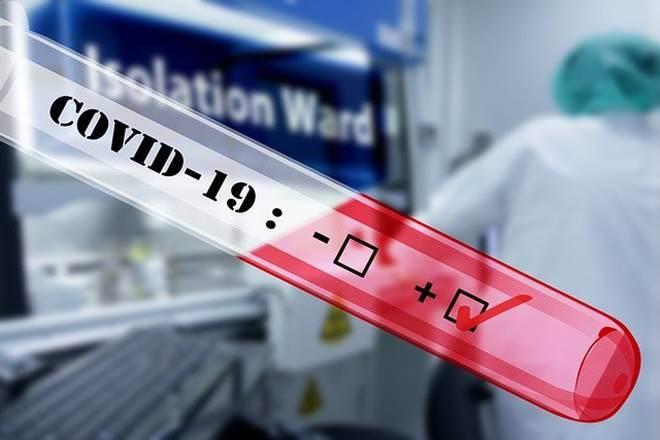
New Delhi: The COVID-19 pandemic has exposed the fragile public healthcare system in the country, yet the Central government’s ‘stimulus’ to deal with the crisis, both in terms of investment and policy reforms, is arguably too little to strengthen the sector. Prime Minister Narendra Modi announced a package of Rs 15,000 crore during his address to the nation on March 24, apparently for “strengthening the country’s health infrastructure” in the light of the pandemic.
Though the allocation of Rs 15,000 crore was an immediate and essential response to the pandemic, any additional allocation for improving the quality of public healthcare, through short-term strategies and long-term goals, found no mention in the ‘stimulus package’ announced recently by Union Finance Minister Nirmala Sitharaman.
While the country is grappling with the biggest health crisis in over a century, the proportion allocated for the sector in the financial package of Rs 20,000 lakh crore is all but meagre. This is despite the fact that the onus of dealing with the pandemic has almost squarely fallen upon the shoulders of the public health sector.
As per healthcare professionals and public health policy experts, the Central government’s response to the COVID-19 pandemic is largely aimed to tackle the economic downturns resulting from it rather than the health impacts of the virus for which there exists no vaccine till date.
The Central government has not clearly demarcated as to what proportion of the Rs 15,000 crore package will be used for dealing exclusively with COVID-19.
“As per our understanding, the package will be used for increasing testing laboratories and kits as well as for procuring Personal Protection Equipment for healthcare workers. It will also be used for investment in tele-consultancy services because other essential primary health services have been badly hit in the light of the pandemic. Investment in the Aarogya Setu (App) is also expected, that will be helpful in contact tracing of COVID-19 patients and to make healthcare services accessible to them,” said Priya Balasubramaniam, senior scientist at the Public Health Foundation of India, an autonomous public-private initiative.
These broad outlines for utilisation of the fund were also mentioned by the Finance Minister when she announced the fifth and final tranche of the ‘stimulus’ package on May 17. She also said that over Rs 4,113 crore in healthcare expenditure had been released to the states so far. However, state governments have not so far been issued any Standard Operating Procedures for utilisation of the fund.
“Allotment of this fund is a beginning in the right direction, but the government needs to go beyond it and do a lot more to make the public healthcare system robust,” added Dr Balasubramaniam, who is also the Director of the Singapore-based Centre for Sustainable Health Innovation.
India’s total expenditure on healthcare in financial year 2020 was a meagre 1.29% of its gross domestic product (GDP) taking into account the spending of both the Central government and various state governments. If direct and voluntary spending by individuals for availing health care services is also factored in, India’s total expenditure on health comes to around 3.6% of its GDP.
Countries that spend much more on healthcare (including direct and voluntary expenditure), in terms of percentages of their GDP, have witnessed their systems collapse under the burden of the pandemic. These include countries like the US (16.9%), France (11.2%), the UK (7.5%), Italy (6.5%), Russia (5.3%) and Spain (8.9%), whose expenditure on healthcare, as quoted within brackets here, has been culled from data compiled by the Organisation for Economic Co-operation and Development (OECD).
In India, the spread of novel coronavirus is still on a clear upward trajectory as compared to the above mentioned nations, where the rate of infection has either plateaued or taken a downward plunge.
At this juncture, it is but imperative that India immediately increase its spending on the public healthcare system. The People’s Health Movement (PHM), a network of grassroots health activists, civil society organisations and academic institutions, spread across 70 countries, has been advocating for government expenditure on healthcare to be a minimum of 5% of GDP.
“As per ballpark figures, India should have a basic commitment of 2.5% of GDP as government expenditure on healthcare as its basic commitment as per the National Health Policy of 2017. An amount of Rs 15,000 crore, which has been announced as healthcare stimulus in the light of the pandemic, should have been increased incrementally per annum for a number of years now. It is not clear how much has been allocated from this amount for increasing human resources in terms of numbers of doctors, nurses and other healthcare professionals. If no allocation has been made for this, it implies that a new disease load is being taken without increasing human resources. This means resources from the staff pool in the health care system at present will be diverted for dealing with COVID-19 at the cost of other existing programmes. What will happen to those programmes in that case?” said T Sundararaman, Global Co-ordinator of PHM.
The World Health Organisation (WHO) recommends one doctor per 1,000 individuals as a global norm for public healthcare systems. In India, however, the doctor-population ratio stands at 1:1,404. Similarly, while WHO recommends three nurses per 1,000 individuals, the ratio in India stands at 1.7:1,000.
“If 2.5% of GDP is to be earmarked for health, at least half of it should go toward increasing human resources. It will go into employment generation that will be distributed equitably across the country. It is a very equitable form of public spending. The allocation made for the pandemic at present is a budget for a systems approach of management, while what we need is rapid development of hospital infrastructure and human resources,” said Dr Sundararaman, adding that PHM has been recommending at least one ICU for a population of 30,000 and a corresponding number of ventilators, ambulances and so on. “This should be the baseline capacity of our healthcare system. We need to go for a surge capacity which is beyond the baseline capacity,” he said.
On May 17, Sitharaman further assured that expenditure on public healthcare would be increased to deal with any eventualities in the future. She also mentioned the Central government’s decision to establish infectious diseases blocks in hospitals at the district level and public health diagnostic laboratories at block levels. However, she steered clear of any projections of the quantum of increase in public health expenditure.
On the other side, in the Union Budget for 2020-21, the total allocation for the National Health Mission (NHM), the country’s premier public health programme, has actually been reduced by 1% from Rs 33,790 crore in 2019-20 to Rs 33,400 crore this year.
“How can you expand the range of health services when your spending on the flagship public healthcare system of the country has gone down? We have been making representations to the government to make allocations with comprehensive planning, but to no avail,” said Amitava Guha, National Convener of Jan Swasthya Abhiyan, the Indian regional circle of PHM.
Further, the Centre has decided to allocate Rs 100 crore toward indigenous efforts at developing a vaccine for COVID-19 in India. This allocation has been made from the Prime Minister’s Citizen Assistance and Relief in Emergency Situations Fund, popularly known as the PM-CARES Fund.
“The package announced by the central government for vaccine research in COVID-19 is aimed at one direction while the policies toward promoting pharmaceutical research in the country are aimed at a totally different direction. All public sector initiatives at healthcare research are being systematically dismantled by the Central government through disinvestment and strategic sale,” said Arun Mitra, senior vice-president of Indian Doctors for Peace and Development.
In July 2019, the Union Cabinet had taken a decision to shut down state-owned pharmaceutical companies Indian Drugs & Pharmaceuticals Limited and its subsidiary Rajasthan Drugs & Pharmaceuticals Limited and sell their land. It had also been decided to carry out strategic sale of two pharma PSUs, that is, Hindustan Antibiotics Limited and Bengal Chemicals & Pharmaceuticals Limited.
The writer is an independent journalist.
Get the latest reports & analysis with people's perspective on Protests, movements & deep analytical videos, discussions of the current affairs in your Telegram app. Subscribe to NewsClick's Telegram channel & get Real-Time updates on stories, as they get published on our website.











